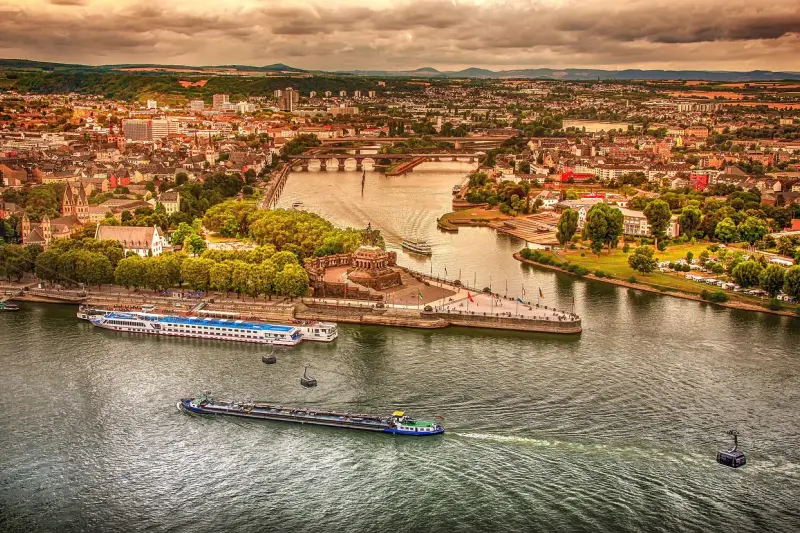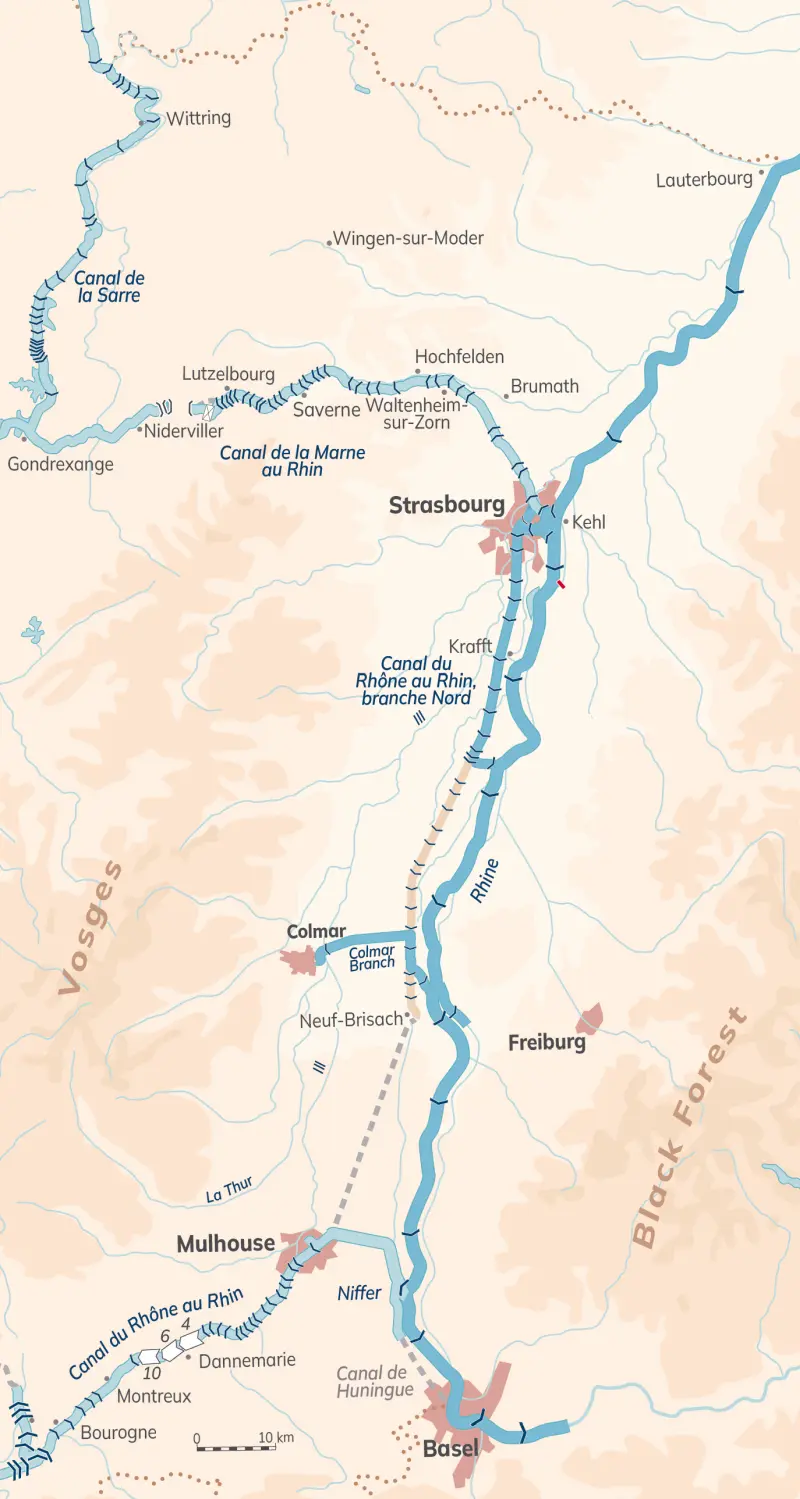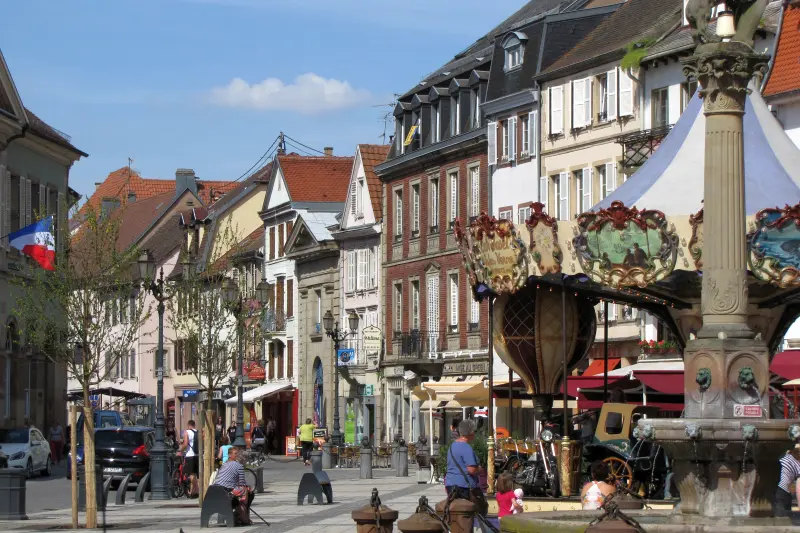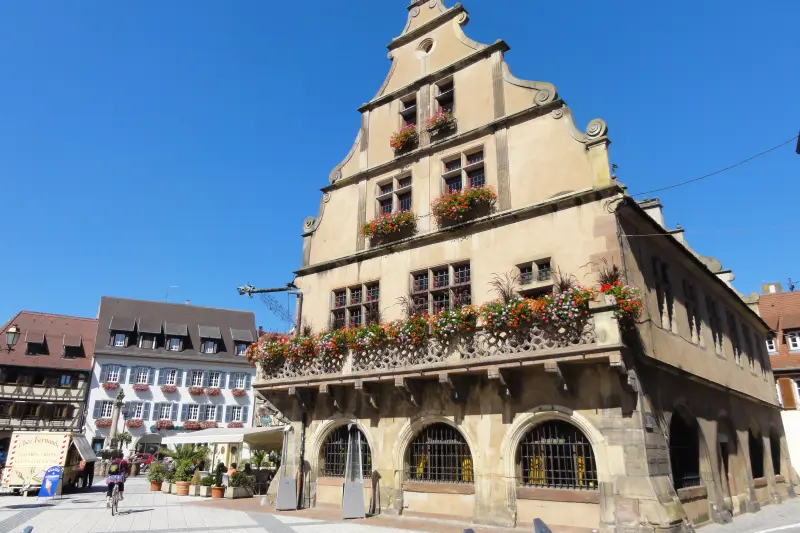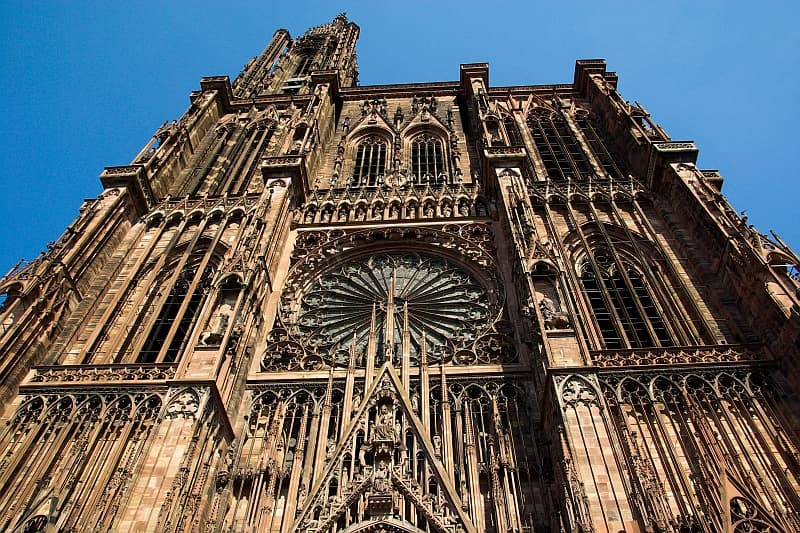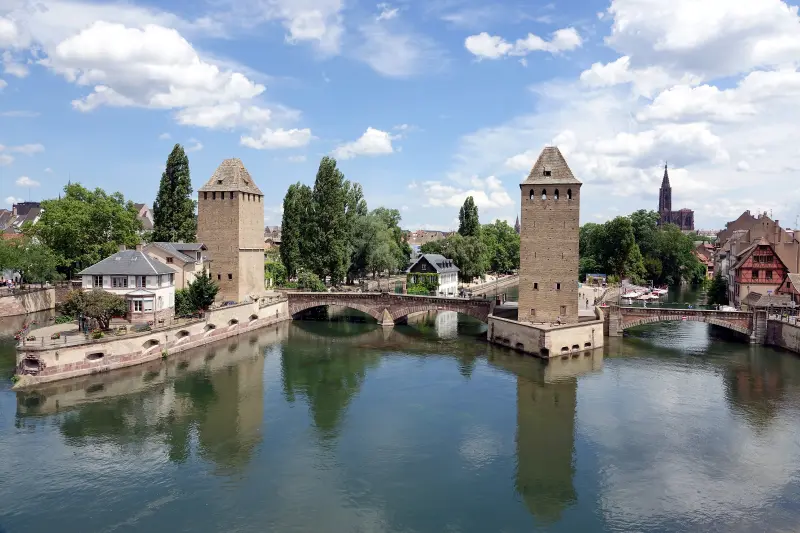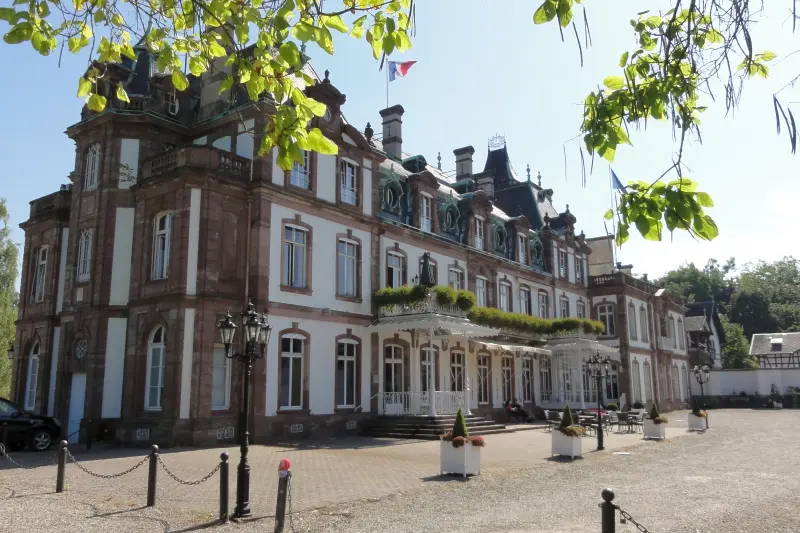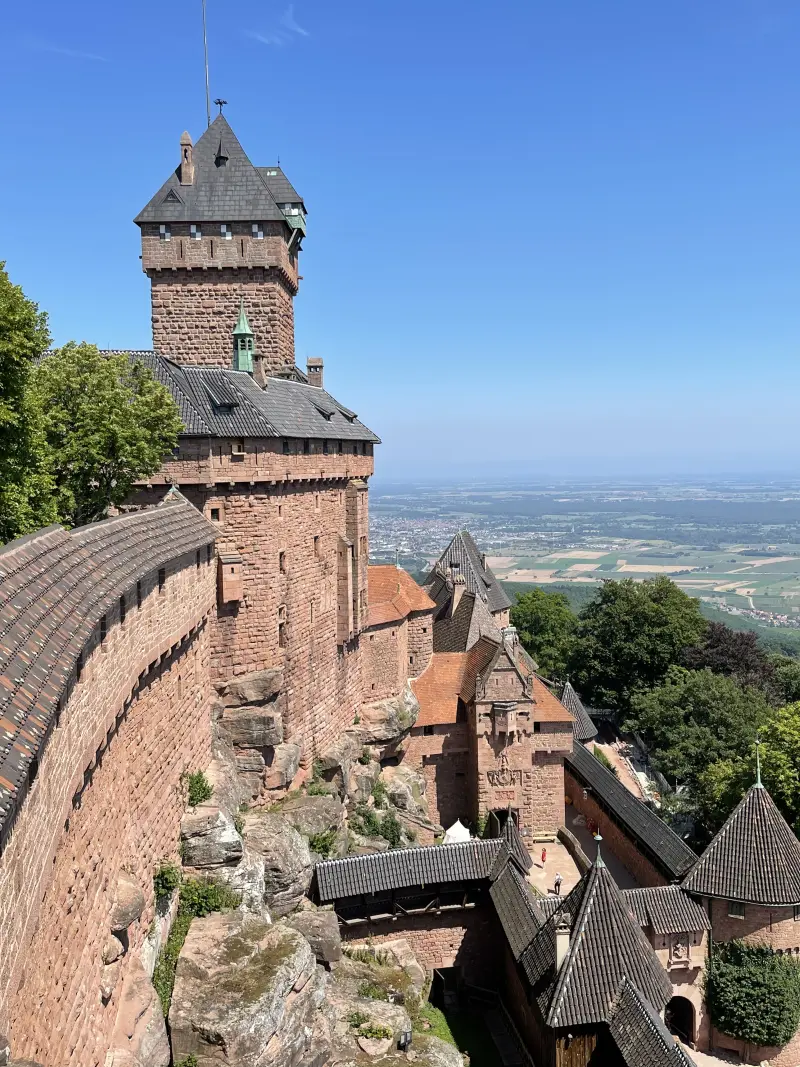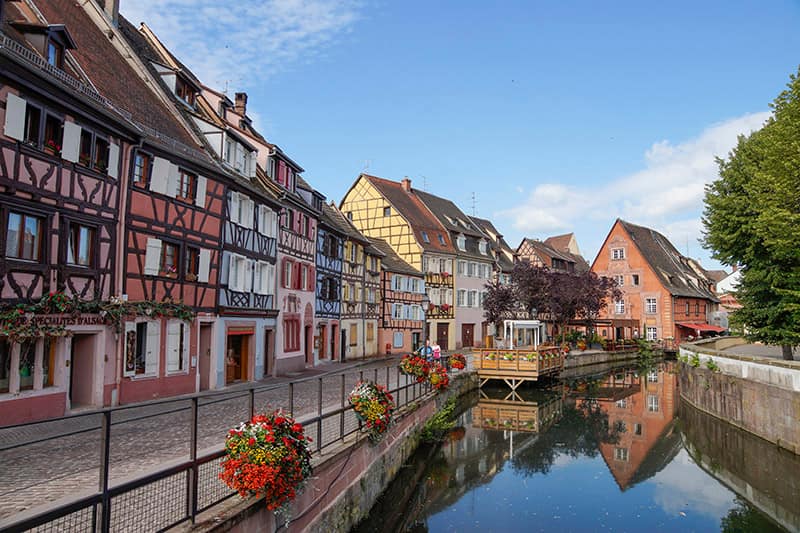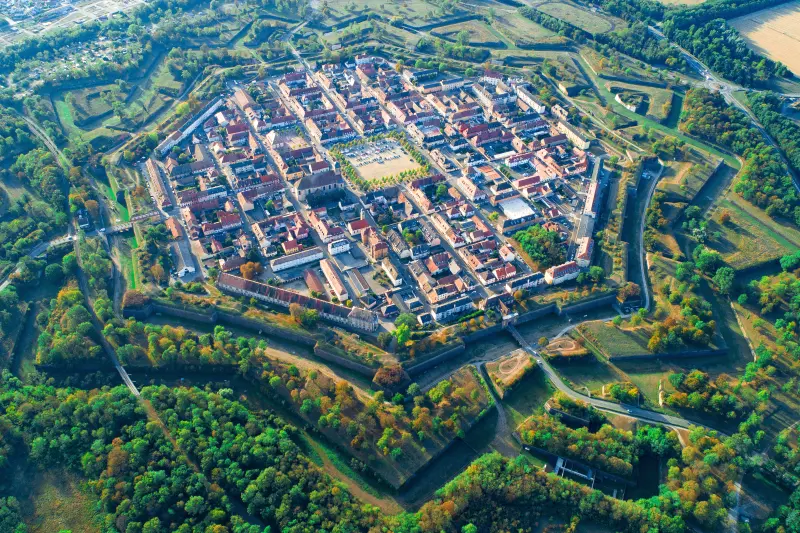Rivers affect the regions through which they flow by marking a political boundary of the river itself, but also unifying the regions both politically and culturally. Of this phenomenon, the Rhine River is a classic example, and it is important to note the political, historical, and cultural consequences this river has had on the region which it runs through.
One of the great rivers of continental Europe, both in a historic and a cultural sense, the Rhine River also counts towards being among one of the most important arteries of industrial transport in the world and has been an open international waterway since the Treaty of Vienna in 1815. Despite being approximately 820 miles long, the Rhine is only navigable for some 540 miles of its length from its estuary at the Dutch city of Rotterdam where it flows into the North Sea, to Rheinfelden on the Swiss-German border.
No other river on Earth has as many historically important cities on its banks – Basel, Strasbourg, Worms and Cologne, to name a few – but there are also such industrial cities such as Ludwigshafen and Leverkusen in Germany. The Middle Rhine, between the German cities of Bingen and Bonn, boasts steep rock precipices and numerous castles, presenting breath-taking vistas and attracting tourists from far and wide. This is the Rhine River of legend and myth, where the medieval Mouse Tower lies at water level near Bingen, and where the castle of Kaub stands on an island in the middle of the Rhine river.
The first steamship voyage along the Rhine River was made from London to Koblenz in 1817, however this was a solitary event. The harbour installations of Mannheim Rhine were opened in 1840, and for almost a century this was effective head of navigation for larger vessels until the upper Rhine was fully developed.
Places of Interest along the River Rhine
One of the best-preserved medieval cities in Alsace, Molsheim contains a considerable number of old houses and buildings, typical of Alsatian architecture. Sporting a rich architectural heritage since the Middle Ages, Molsheim was one of the sees of the Bishop of Strasbourg and became a refuge for Catholic religious orders during the Reformation. The city is perhaps best known for housing the historic headquarters of the sports-car manufacturer Bugatti, as well as one of the main factories of Mercedes-Benz.
The 17th century Jesuit Church is one of the largest churches in Alsace, after the Cathedral of Strasbourg and could house the entire city’s population when built It contains a 19th century altar, two internal chapels and a Silberman organ built in 1781.
The Chartreuse de Molsheim, founded by Carthusian monks who had been ousted from Strasbourg in the 16th century, was, until the 18th century, a city within a city. In 1662 the Carthusians had managed to build a three-hectare convent within Molsheim’s city walls with 18 individual cells connected by a cloister to the church and other community buildings. Surrounded by an enclosure, the convent was an autonomous institution, independent of the outside world. In 1791 a fire damaged the church and several cells, and the monks were dispersed in 1792. After serving as a prison, the Chartreuse de Molsheim was sold in 1796, and the monks’ cells and bays of the cloister were transformed into residential houses. In 1842, the city of Molsheim acquired part of the buildings to house the hospital and since 1985 it has housed the municipal museum and the Bugatti Foundation.
A Renaissance building built by the Butchers’ Corporation in 1583, the Metzig is one of the most emblematic buildings in Molsheim. The building formerly contained a slaughterhouse, a store and a meeting room, and remains the best example of Renaissance-style architecture in the city. A fine-looking edifice, its ground floor is vaulted while the first floor is highlighted by balcony balustrades. The front of the building features a double staircase, complemented with an onion-shaped tower and automata clock from 1607. The Corporation held its meetings in the upper floors of the Metzig, while the ground level housed butchers’ shops and storerooms.
One of the three fortified gates that allowed access into the medieval city of Molsheim, the sole remaining tower is that of the Porte des Forgerons. The gate houses a magnificent two-ton bell cast in 1412 from the former church of Saint-George, which was located on the current Place du Marché. Molsheim’s fortifications were thought to have been built in the mid-13th century, and then enlarged to the east in the 14th century. The city’s moat was filled in the 18th century and replaced by gardens. The outer face of the Porte des Forgerons was decorated with a neo-Gothic niche and statue in 1868.
Capital of the Bas-Rhine department, Strasbourg was originally a Celtic village, and under the Romans became a garrison town called Argentoratum. The city was captured by the Franks in the 5th century, who called it Strateburgum, from which its present name is derived. In 842, Charles II, king of the West Franks, and Louis II, king of the East Franks, took an oath of allegiance in Strasbourg, a text of which is the oldest written document in Old French. After a power struggle between its citizens and its bishops in the Middle Ages, Strasbourg became a free city within the Holy Roman Empire.
Strasbourg’s population was mainly protestant after the reformation, but cautiously avoided the religious conflicts of the Thirty Years’ War. In 1681, Louis XIV seized the city in peacetime and obtained ratification for his arbitrary action by the Treaty of Rijswijz in 1697. The town retained its privileges until the French Revolution a century later. In 1792, the French poet, musician and soldier Claude-Joseph Rouget de Lisle, composed the anthem of the Rhine army in Strasbourg, since known as La Marseillaise. During the Franco-German War of 1870-71, the Germans captured Strasbourg following a 50-day siege, and annexed it to the German Empire. The city reverted to France after World War One but was again occupied by Germany from 1940-44.
The city of Strasbourg is traversed by the River Ill, which divides and surrounds the Grande Île, on which the old town and most of the city’s famous buildings are situated. The island was designated a UNESCO World Heritage Site in 1988.
Strasbourg’s 11th – 15th century Cathedral of Notre-Dame is widely considered one of the finest examples of Rayonnant Gothic architecture in Europe. At 142 metres (466 ft), it was tallest building in the world from 1647 to 1874, when it was surpassed by St. Nikolai’s Church in Hamburg. Today it remains in the 6th tallest church in the world and the highest still standing extant structure built entirely in the Middle Ages. Built of red Vosges sandstone, it is a harmonious edifice, despite the variety of its architectural styles. It has an asymmetrical façade from the 13th century with fine sculpted portals and only one tower. Its graceful spire dates from the 15th century. Damaged during the Prussian siege of 1870, and again in the Second World War, it has been carefully restored. The 18th century Château de Rohan, a former episcopal palace, houses three museums. La Petite France district of the city has several well-preserved streets with wooden houses, as well as some picturesque canals.
La Petite France, also known as the Quartier des Tanneurs, is the southwestern portion of the Grand Île in Strasbourg. Here, the River Ill splits into various channels that cascade through an area that was, in the Middle Ages, home to the city’s tanners, millers and fishermen. Today the district is one of Strasbourg’s main tourist attractions, and forms part of the UNESCO World Heritage Site of the Grand Île.
Constructed from pink Vosges sandstone from 1686 to 1690 according to plans by Sebastien Le Prestre Vauban, the principal defensive function of the Barrage Vauban was to enable, in the event of an attack, the raising of the water level of the River Ill, thus flooding the land south of the city and making it impassable to the enemy. This measure was deployed in 1870, when Strasbourg was besieged by Prussian forces, and resulted in the complete flooding of the northern part of the suburb of Neufdorf, which yielded the destruction of many buildings and the evacuation of its entire population. Three of the arches are raised to permit navigation, and the access corridor is built across drawbridges. The roof was reconstructed in the 1960s to construct a panoramic terrace. Today the structure displays ancient plaster casts and copies of statues and gargoyles from Strasbourg Cathedral and the Palais Rohan. Another must see when cruising on the River Rhine.
The Ponts Couverts are a set of three bridges and four towers that make up a defensive work built in the 13th century on the River Ill. The three bridges cross four channels of the Ill that flow through Strasbourg’s historic Petite France quarter. Construction on the bridges commenced in 1230, and they were opened for public use in 1250. As a defensive mechanism, they were superseded by the Barrage Vauban, just upstream, in 1690, but remained in use as bridges. As built, each of the bridges was covered by a wooden roof that served to protect the defenders who would have been stationed on them in time of war. The roofs were removed in the 18th century, but the name Ponts Couverts has remained in common parlance since.
An 18th century château situated in the Robertsau district of Strasbourg, the Château des Pourtalès was built as a small Manor House for the then contractor in charge of the construction of Strasbourg’s fortifications. In 1802, Baron Paul-Athanase Renouard de Bussière, an heir of a wealthy Strasbourg industrial family, bought the property and expanded the manor into a gracious château. Between 1870 and 1914, the house was the residence of Comtesse Mélanie de Bussière and her husband, Count Edmond de Pourtalès, the son of a Swiss banker and art collector. Comtesse Mélanie, a renowned salonnière and Lady-in-Waiting to Empress Eugénie, was the only surviving child of Baron Alfred Renouard de Bussière, head of the Royal Mint of Paris. During the Franco-Prussian War, the château suffered fire damage, and in the First World War was occupied by the Germans. The owners closed the château in 1939 and during the Second World War it was again confiscated by the Germans and used to house high-ranking officers. In 2009, the property was restored and converted into a hotel.
Part of the fourteen fortifications that were erected by the Prussians following the fall of Strasbourg in 1870, Fort Rapp was built to protect Strasbourg from French attacks. Protected by eighteen 90-150mm cannons, the fort contains 200 rooms and was able to host a garrison of 800 men.
Located in the Vosges Mountains overlooking the Upper Rhine Plain, the medieval Château du Haut Koenigsbourg was used by successive powers from the Middle Ages until the Thirty Years’ War, when it was abandoned. Entirely rebuilt at the turn of the 20th century, the castle today serves as a testament to medieval Alsatian architecture in the 16th century.
Nestled among vineyards, the ancient city of Colmar is renowned for its old town, which for centuries has preserved a rich architectural and culinary heritage. It’s one of the places to visit when cruising on the River Rhine.
Colmar was first mentioned during the Saxon wars in the 9th century, and by the 13th century had been granted the state of a free city by the Holy Roman Emperor Frederick II. During the Thirty Years’ War, the city was occupied by the Swedish army for two years, before being handed back to Germany. Colmar was conquered by France in the 17th century under the reign of king Louis XIV, and was ceded to the country shortly afterwards, under the Treaties of Nigmegen. Along with the rest of Alsace, Colmar was annexed by the newly formed German Empire in 1871, as a result of the Franco-Prussian War.
The city returned to France following the First World War, only be return into German hands during World War Two. Mostly spared from the destructions of the French Revolution, the Franco-Prussian War and the two world wars of the 20th century, the cityscape of Colmar’s old town is homogenous and renowned amongst tourists as one of the best preserved in Alsace. Colmar’s secular and religious architectural landmarks reflect over eight centuries of Germanic and French culture. Crossed by canals and the River Lauch, Colmar’s “Little Venice”, is a popular spot among tourists and locals alike.
Famous for its half-timbered houses, Colmar’s remarkable medieval merchants’ homes also do not fail to impress. The most famous among them is the 14th century Adolf House. Built in 1350, it is believed to be one of the oldest in the city and takes its name from the Adolf family, who removed its Gothic windows at the end of the 19th century, thus giving the building its current appearance. Completed in 1537 for the hatter Ludwig Scherer, who made his fortune trading in the Val de Leipvre, the Pfister House is the very first example of Renaissance architecture in Colmar. Its two-storey corner oriel, wooden gallery and murals representing Biblical sciences has made it one of the symbols of the old town.
A fortified city, Neuf-Brisach was built under the Treaty of Ryswick in 1697 to fortify the border between France and the Holy Roman Empire and, subsequently, the German states. Built to plans drawn up by Vauban, the fortifications were the military engineer’s final work and the culmination of his “Third System”. The city’s layout was that of an “ideal city”, with a regular square grid system within an octagonal fortification. Generous space was given to a square in the centre of the city, flanked by an impressive church, while individual blocks were offered for private development, either as affluent houses, private gardens or as properties offered for commercial rent. Simpler housing was provided in long tenement blocks built inside the curtain wall. Access was provided by large gateways in the four principal curtain walls. The city suffered some damage during the Second World War, but still presents a very clear example of the latest in fortification technology at the beginning of the 18th century. Neuf-Brisach was granted UNESCO World Heritage status in 2008 for its quintessential military fortifications and its testimony to the influence of Vauban on military architecture during the 17th to 19th centuries. It joins 12 other Vauban-designed fortified buildings and sites along the borders of France which have also been designated UNESCO World Heritage status, known as the Fortifications of Vauban group. Another great places of Interest along the River Rhine!
 English
English
 Spanish
Spanish French
French German
German Norwegian
Norwegian Portuguese
Portuguese Swedish
Swedish Italian
Italian Russian
Russian Simplified Chinese
Simplified Chinese Japanese
Japanese
